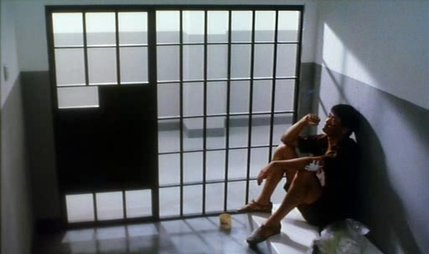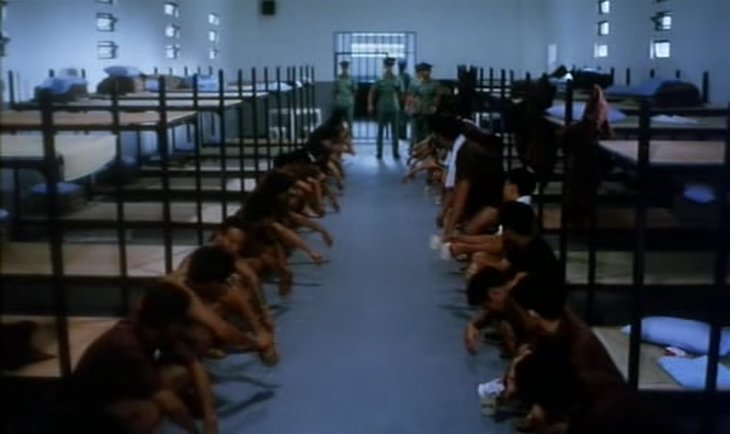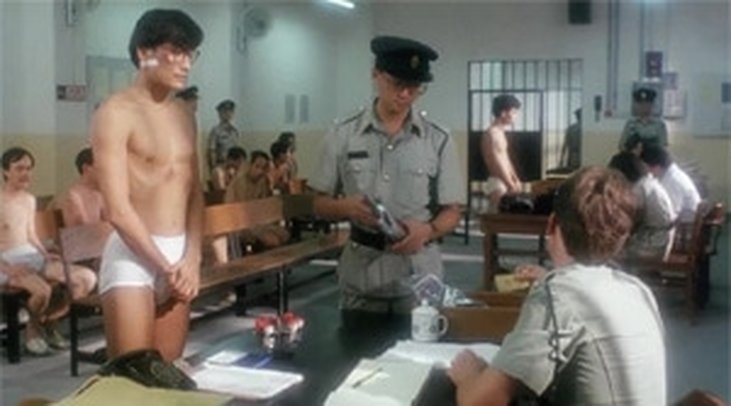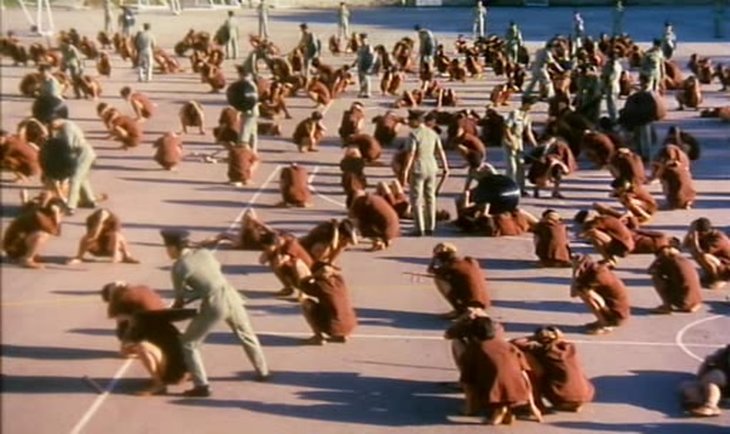 Ringo Lam's Prison on Fire on the surface may seem atypical of filmmaker's unglamorous action films, being set entirely in a prison, void of the typical gunplay and gangster of his other films that have gained status as 'Heroic Bloodshed'. Yet, all that is changed is the aesthetic of these characters - the gangsters now wear stripes, and the lines between the oppressors and the oppressed are blurred, but it's the film's depiction of male bonding in the face of violence, torment, and pain, that makes Prison on Fire another worthy study of male ethos. The rather plotless story follows the recent incarceration of Lo Ka-Yia, whose been locked away due to involuntary manslaughter after defending his family owned store from a group of street hooligans. Lo Ka-Yia's placement in this prison is much like a minnow being placed into a shark tank, a character whose high-morality and righteous demeanor soon get him into immediate confrontations with various power structures in the prison, including both the guards and the gang leaders who run the operation from the inside. It's through Lo Ka-Yia's friendship he forms with Mad Dog, a seasoned inmate whose unhinged demeanor and carefree mindset help Lo Ka-Yia navigate the tumultuous prison political waters, enabling him to survive his sentence in this foreign, hostile climate. Ringo Lam's Prison on Fire is an intricate examination of prison culture and the power structures which exist within, deconstructing how such a harsh environment as prison often offer no sense of empathy or reprieve, being structures that don't adapt to the individual but rather consume them, presenting a place where the lowest common denominator of morality forces those inside to live by its rules. Lo Ka-Yia is a character who finds himself pushed to the edge by the new, harsh world he finds himself, his own morality tested and abused through a form of psychological torture that finds this character forced to accept a new playing field when it comes to morality and general decency. Mad Dog's unhinged, carefree demeanor offers the only type of reprieve from this hostile environment, something which Lo Ka-Yia must embrace, or at least comprehend, in order to survive. Prison on Fire isn't a film interested in the rehabilitation process, instead Lam's focus is on the bonding effect which such trauma can create, focusing on the unlikely friendship which forms between these two characters. Their time spent together in the course of this story doesn't provide any type of morality tale, rather simply a story of survival while touching on the vast importance of adaptability and bonding in such harsh environment. The finale of Prison on Fire, a brutal ballet of fisticuffs and raw aggression, is a worthy conclusion to Lam's unique prison epic, with the primal brutality on display symbolizing how the power structures of prison breed and manufacture brutish violence where strength and violence are rewarded with power. Ringo Lam's Prison on Fire is not quite like any prison film before it, being simply put, a survival story focusing on male ethos under the tumultuous moral conditions of prison.
0 Comments
Leave a Reply. |
AuthorLove of all things cinema brought me here. Archives
June 2023
|



 RSS Feed
RSS Feed
